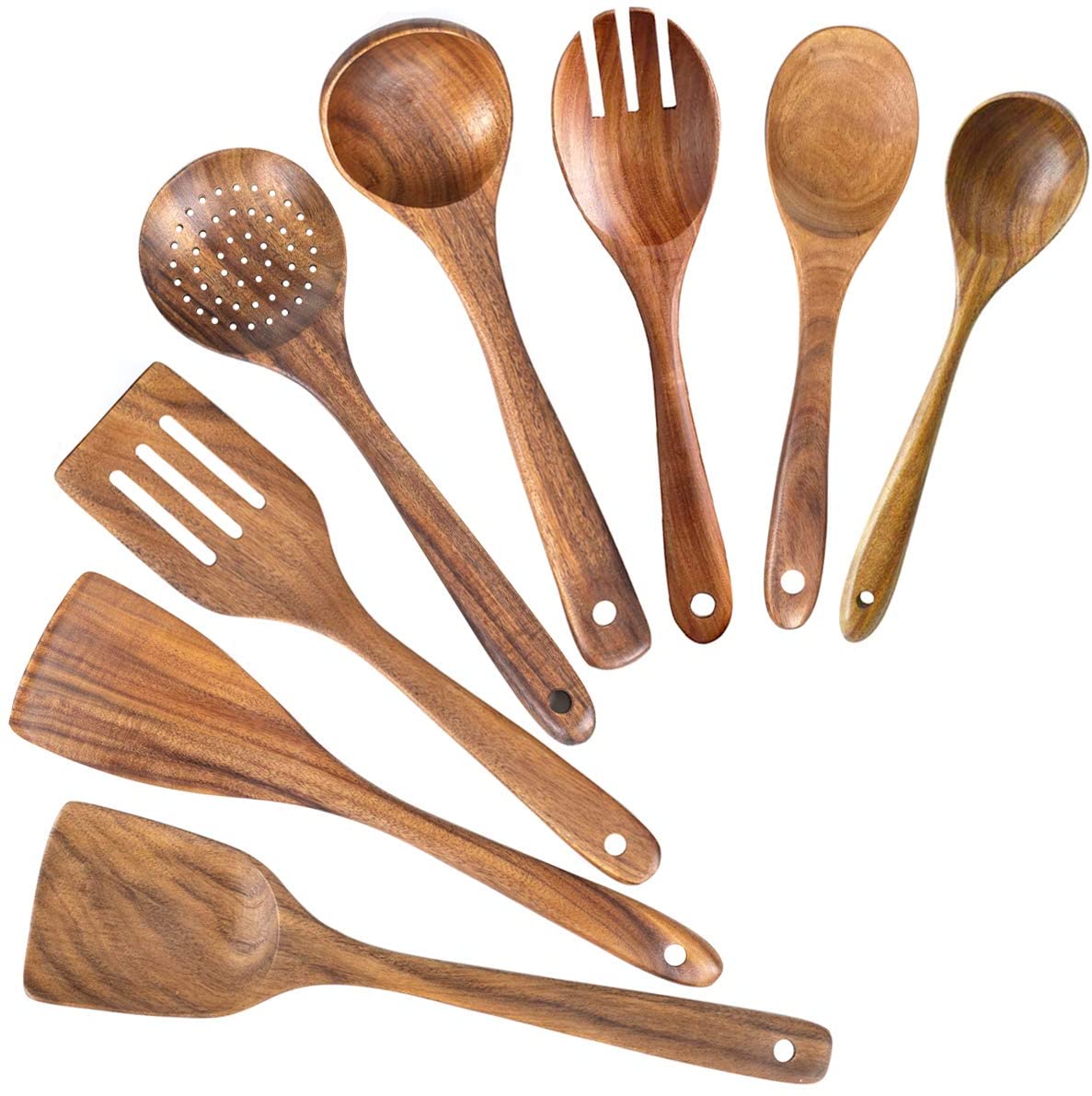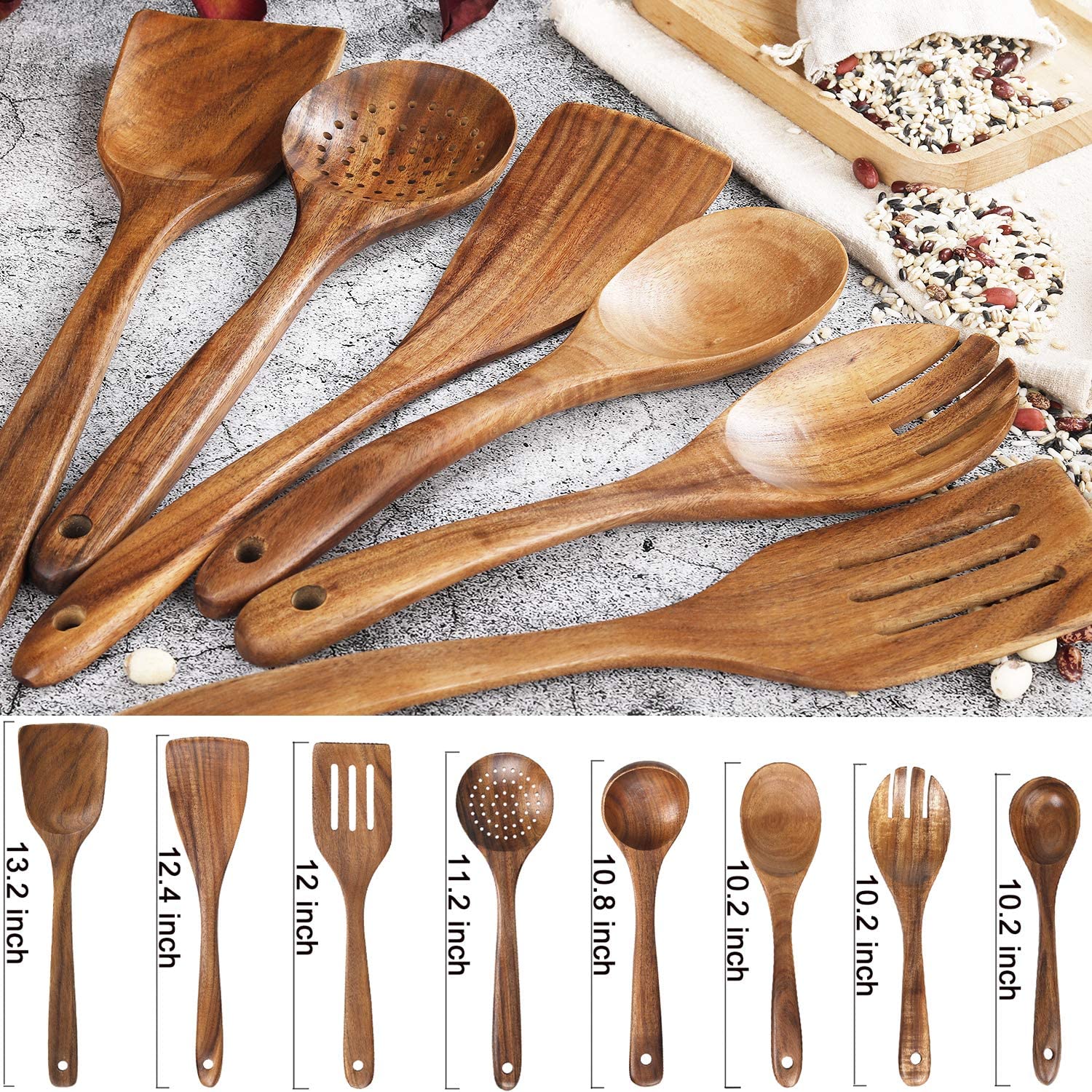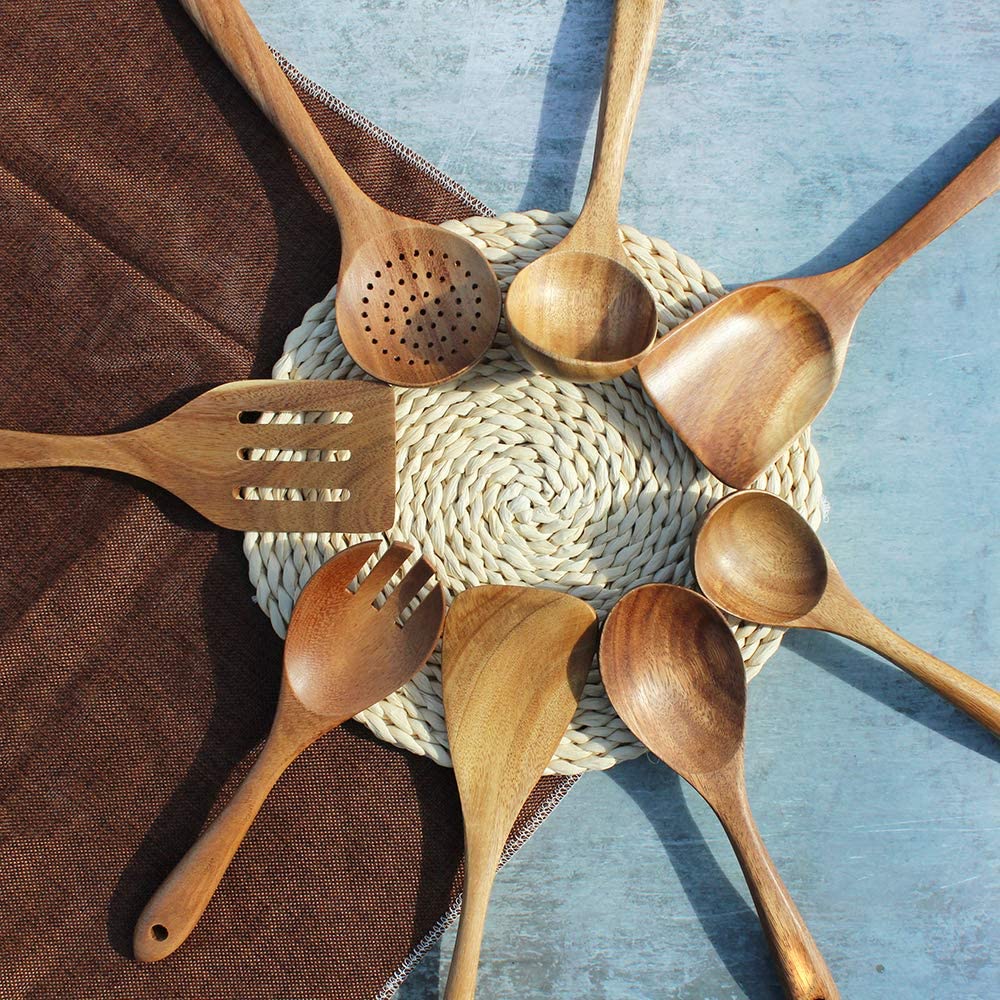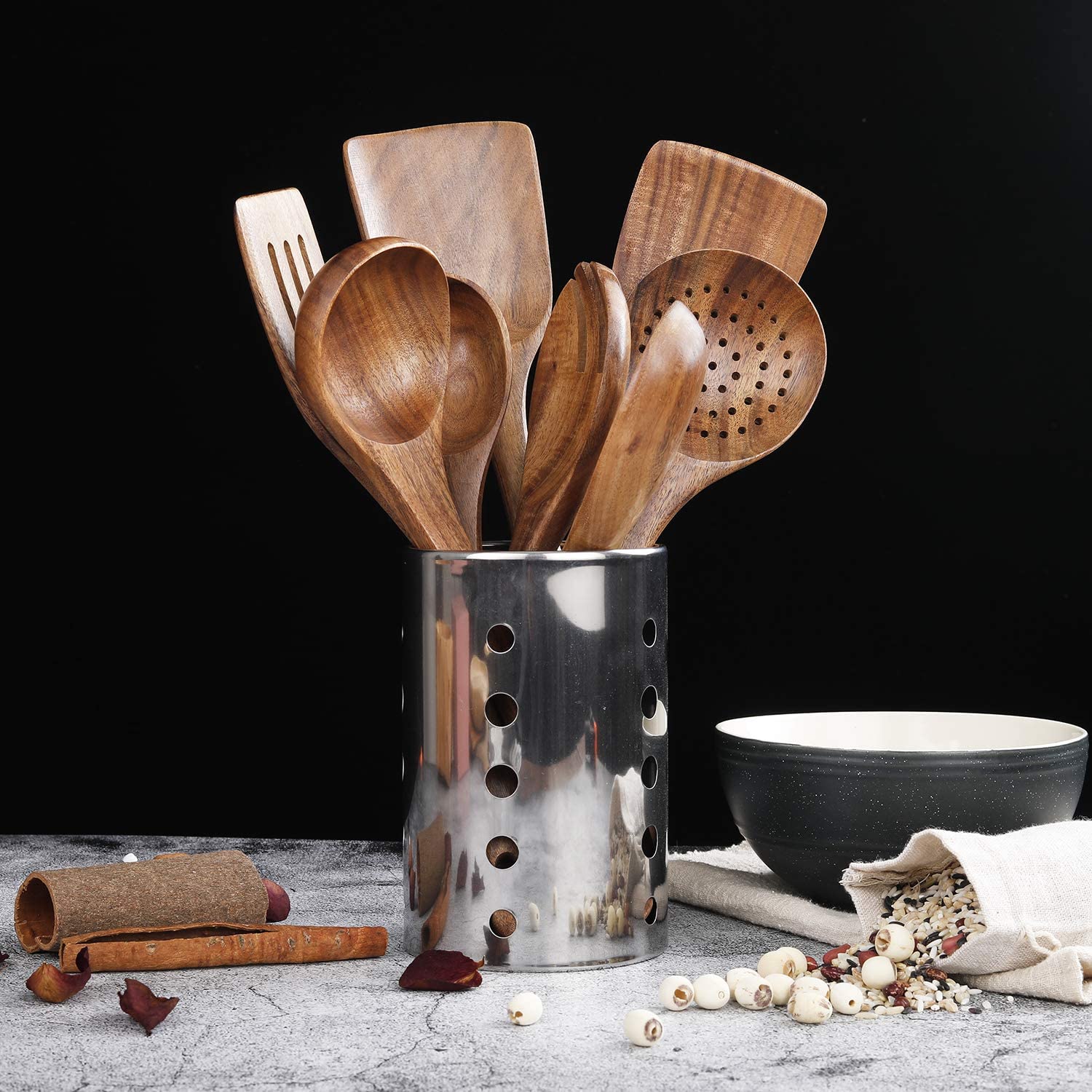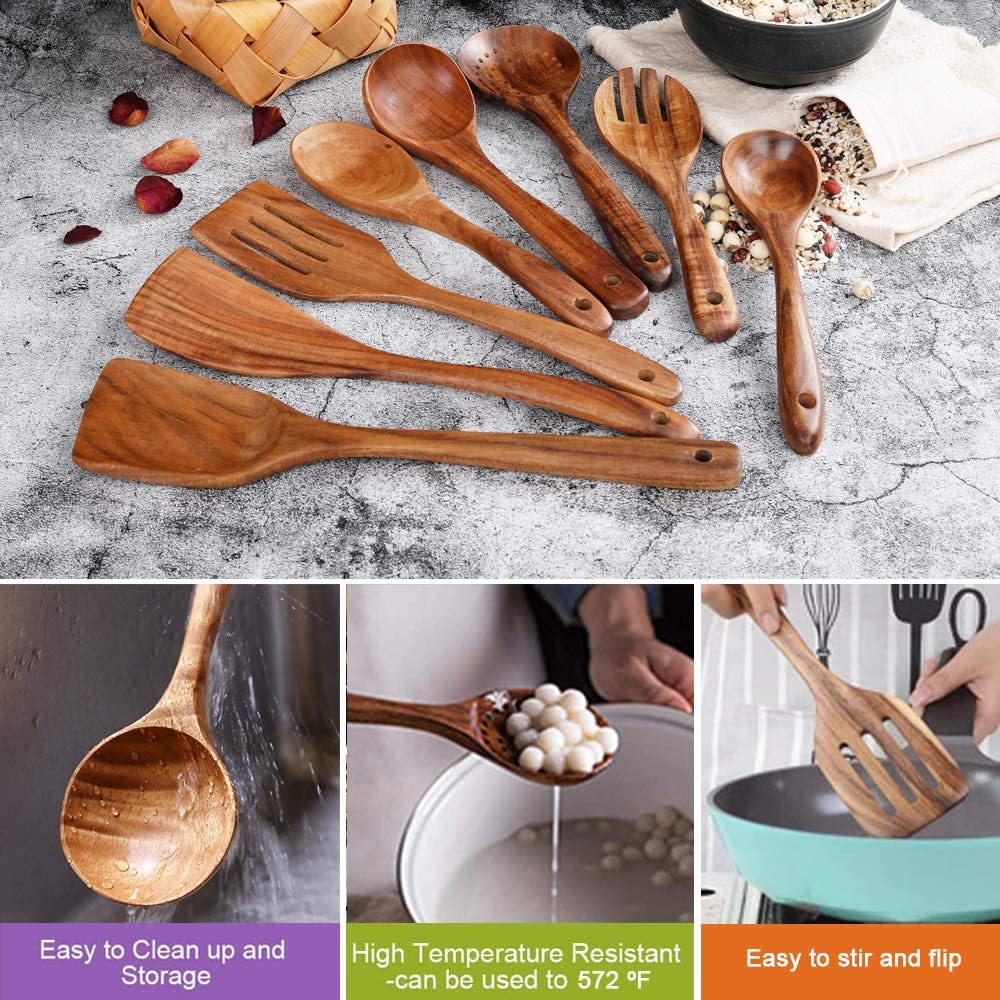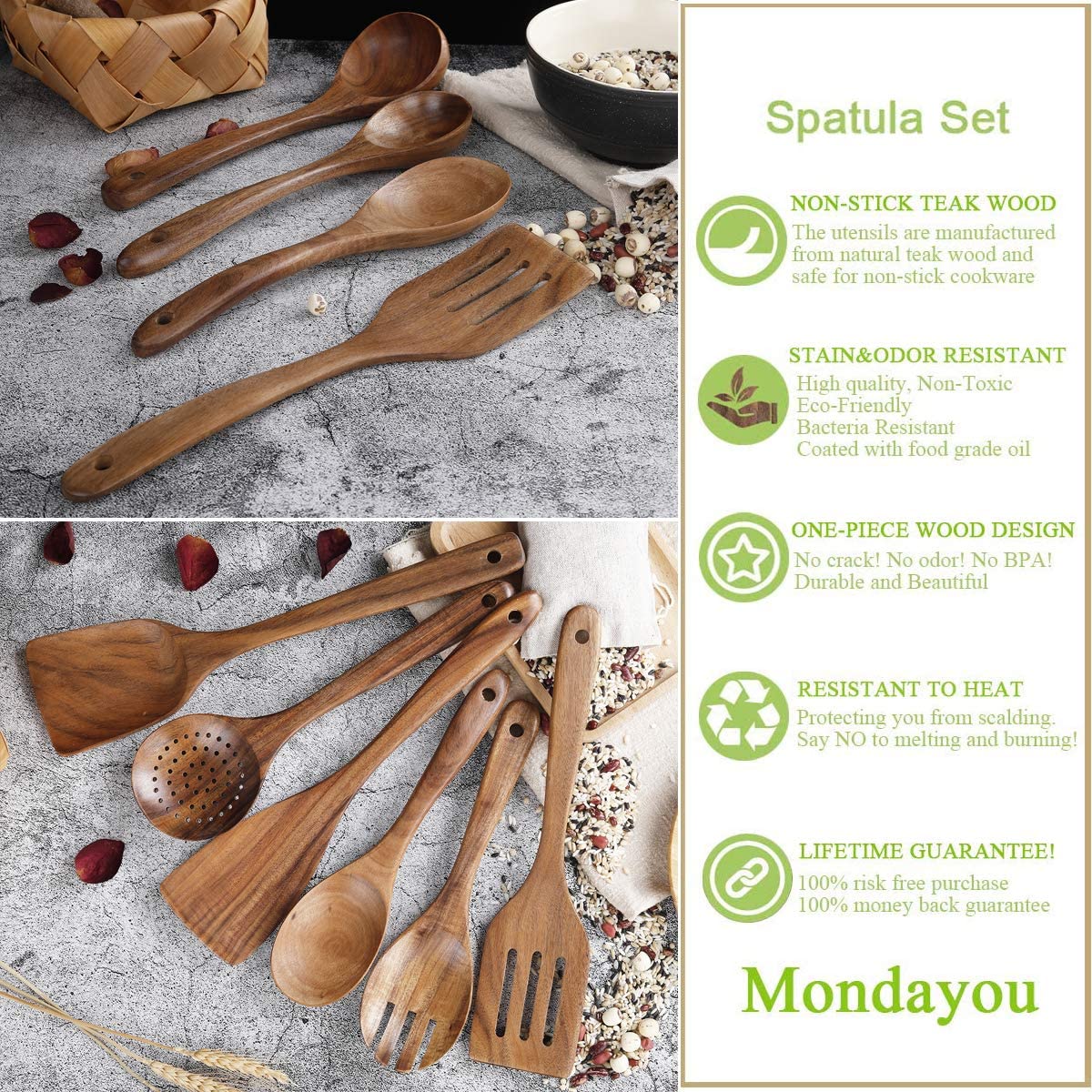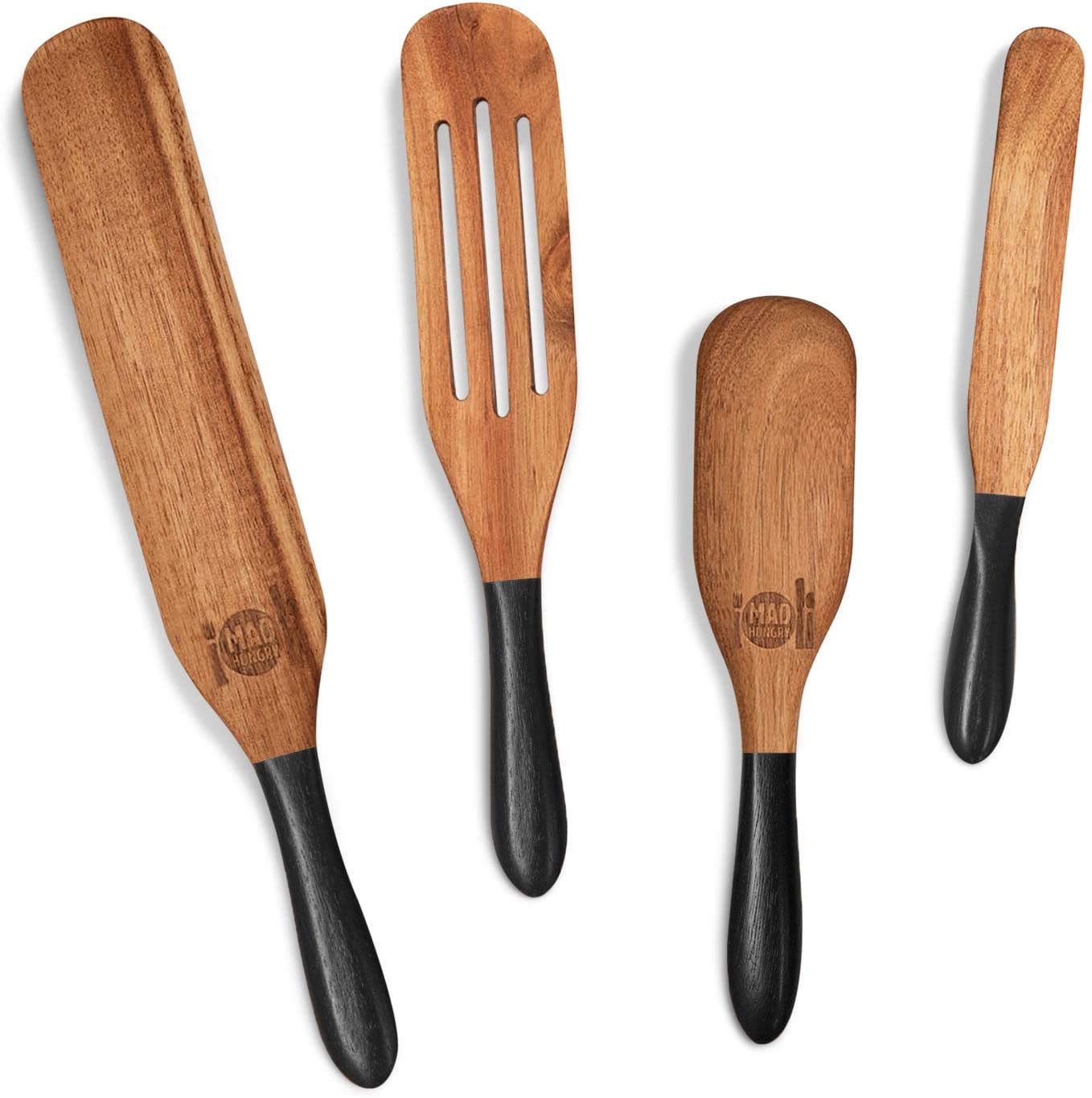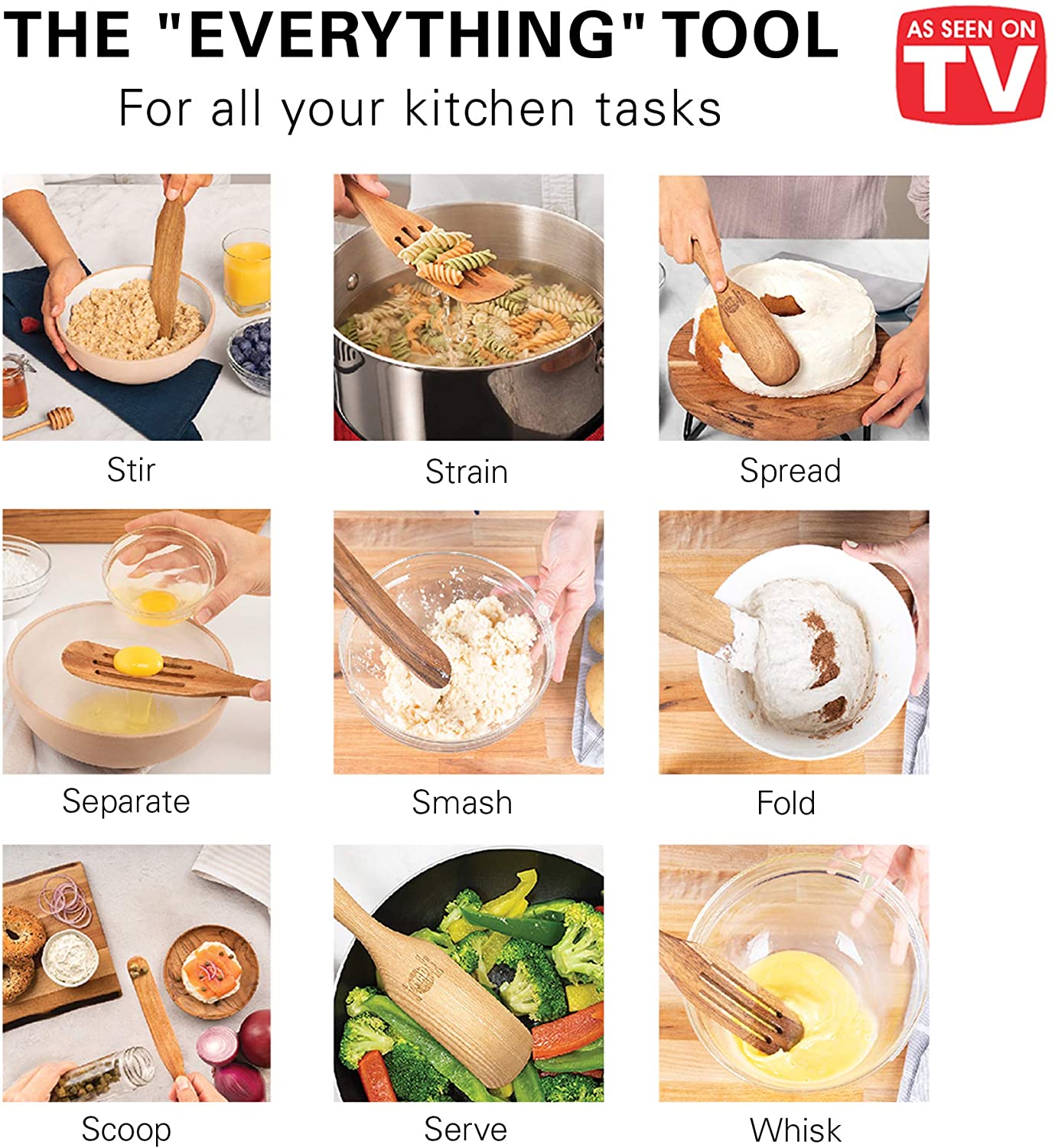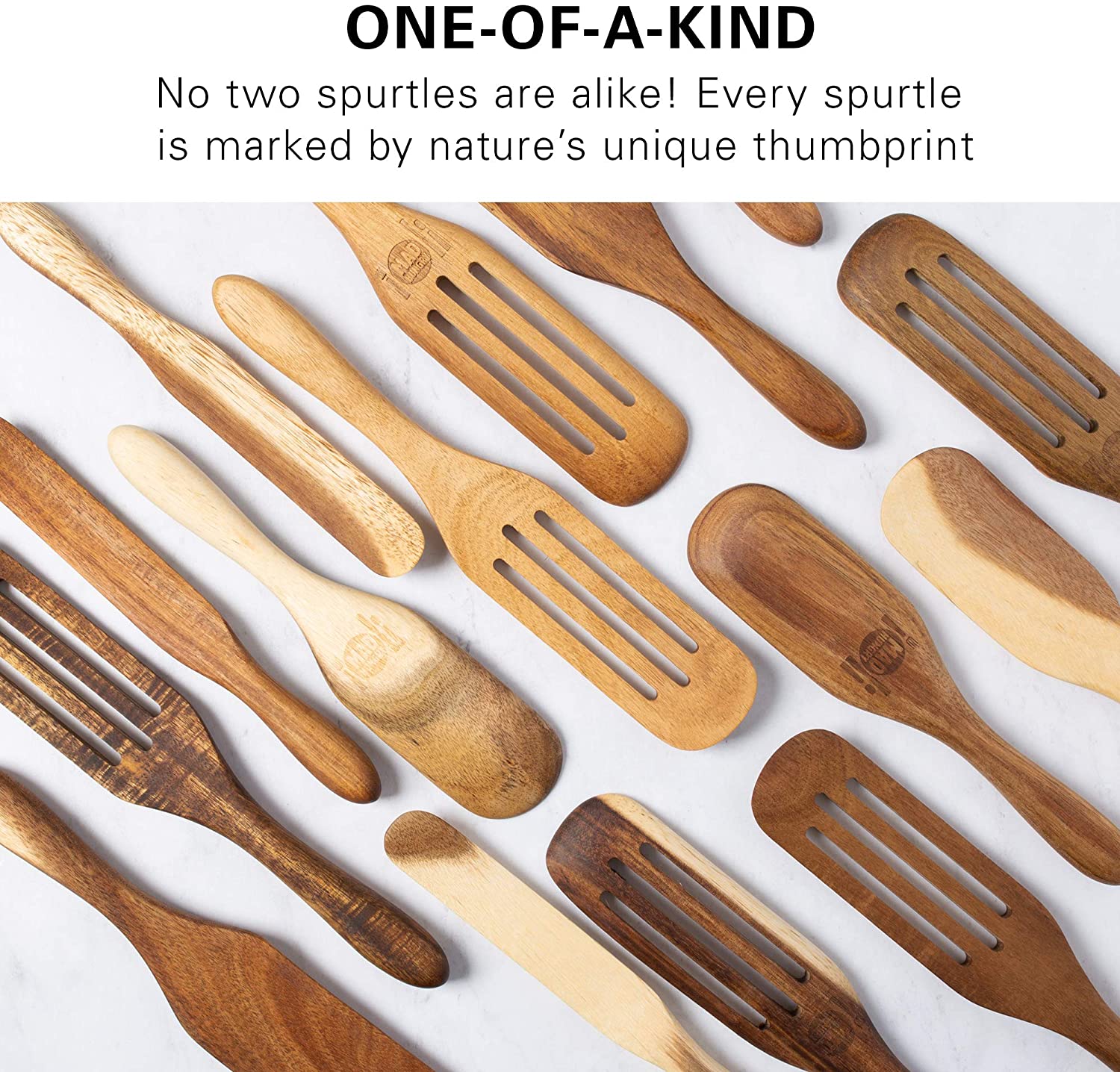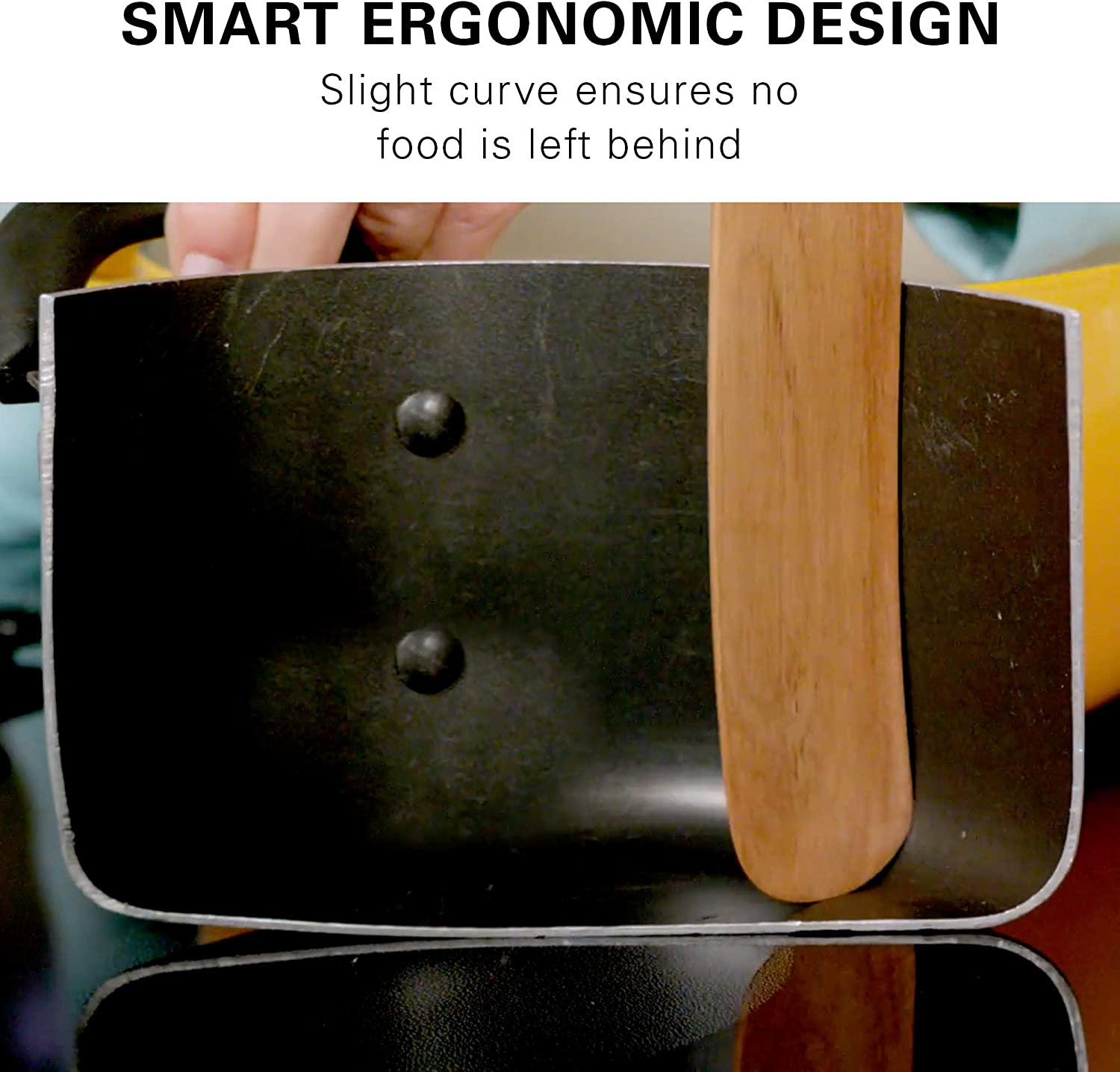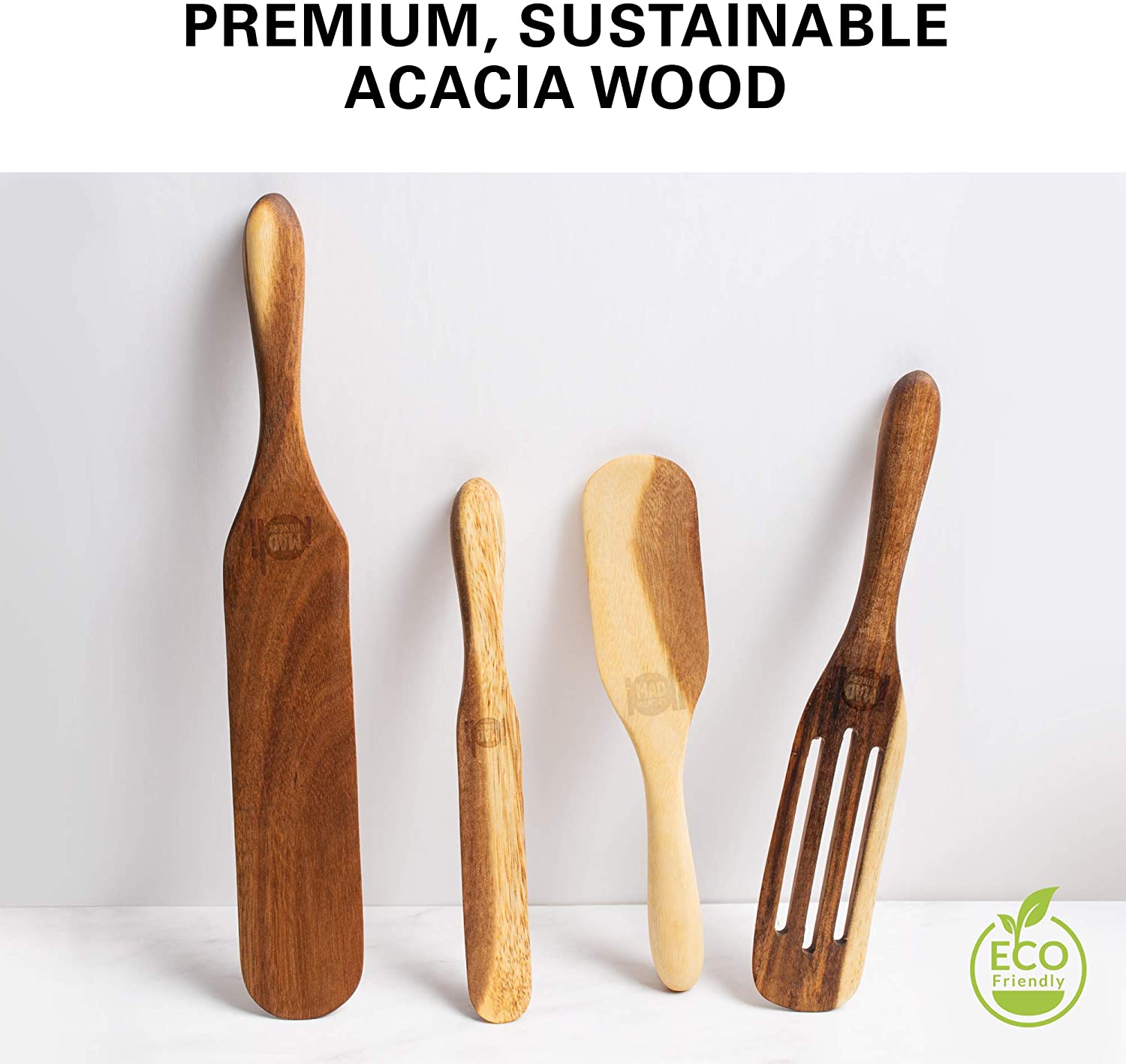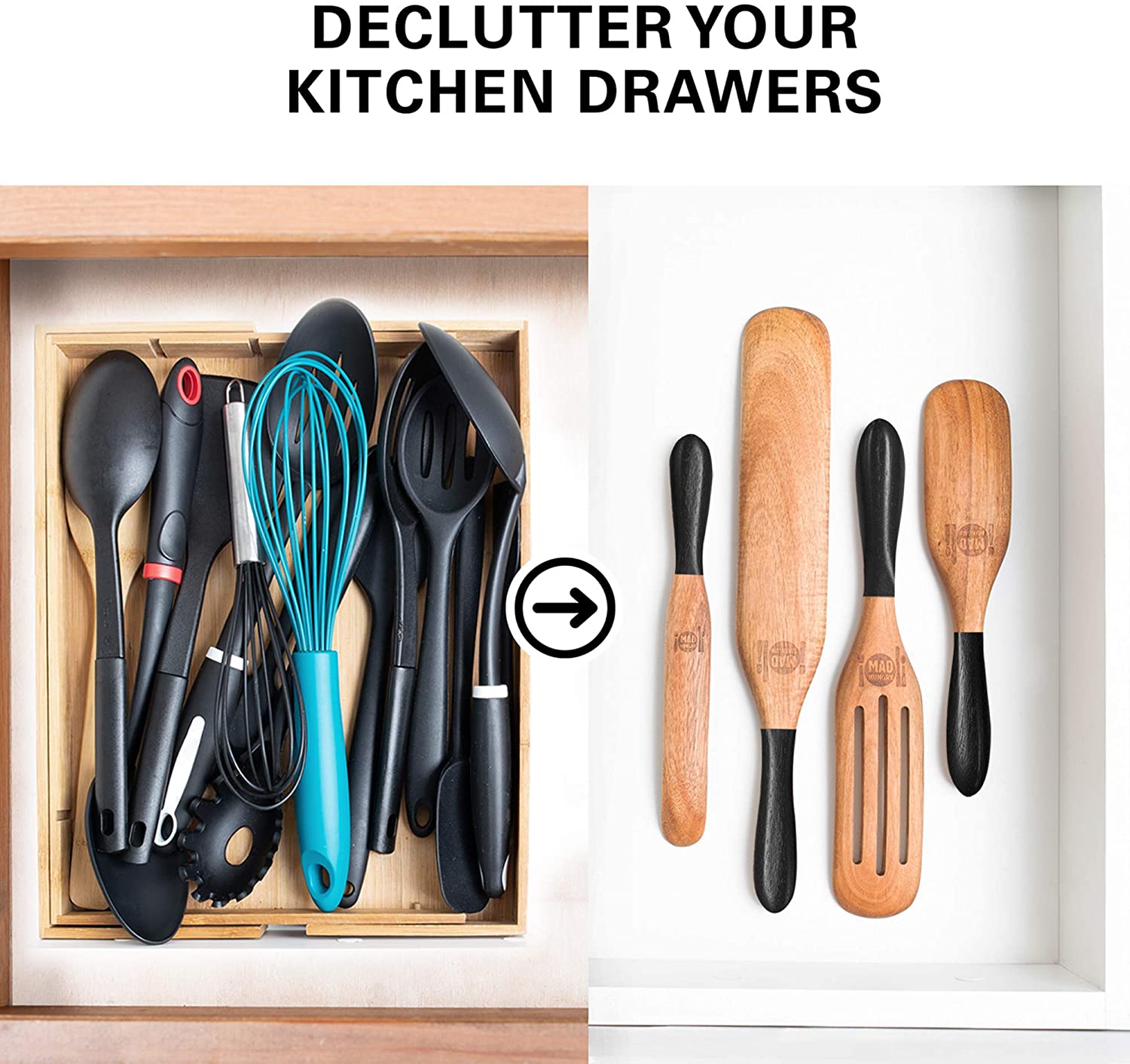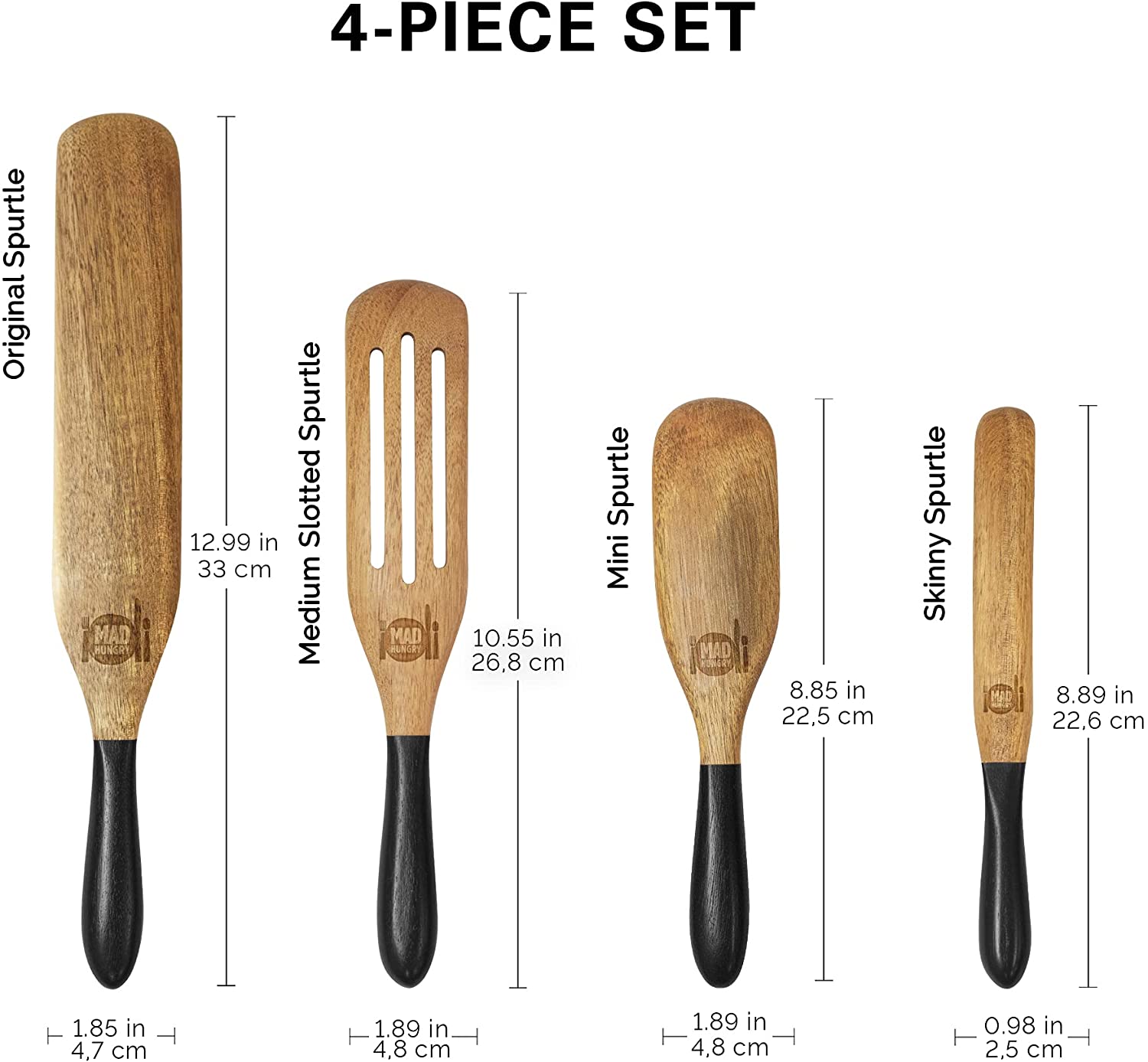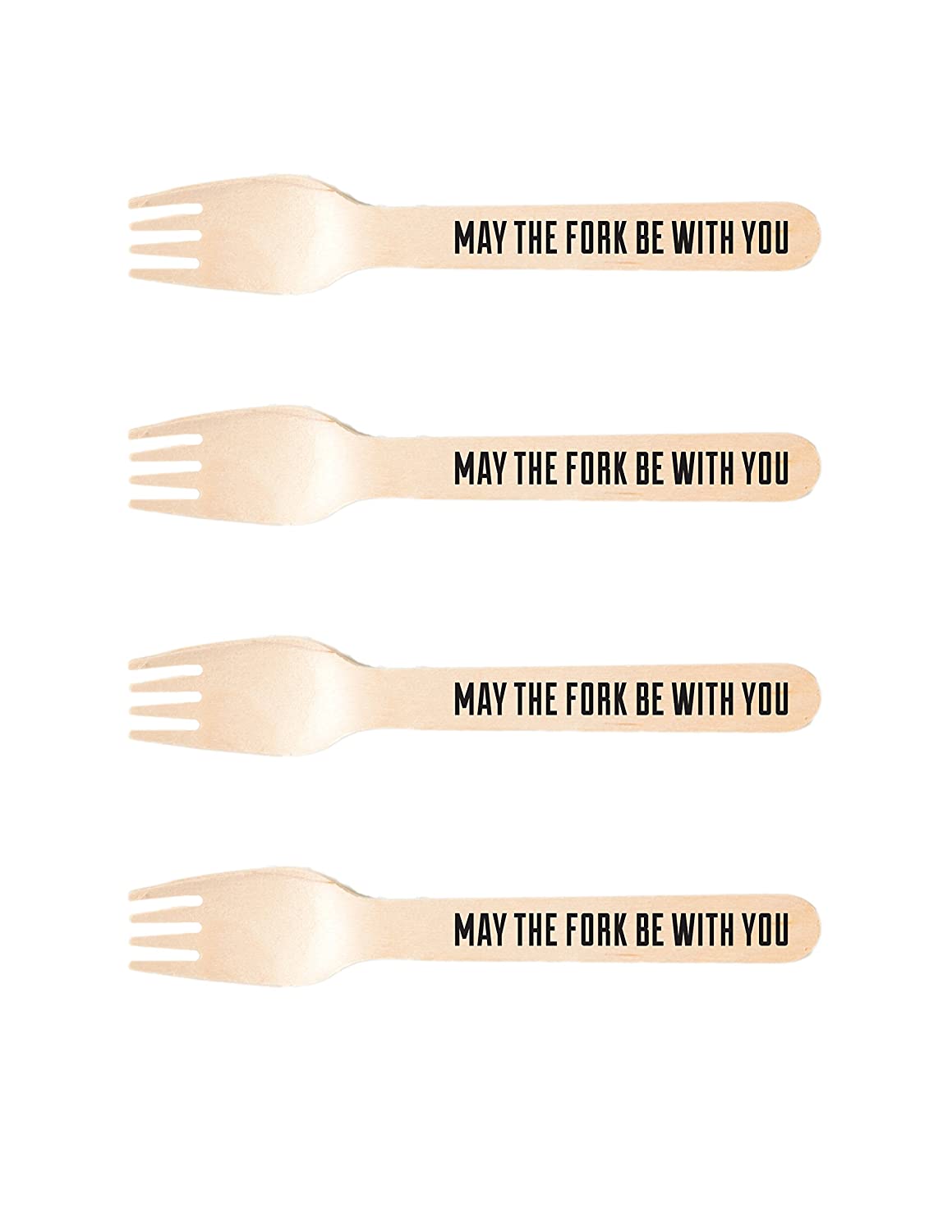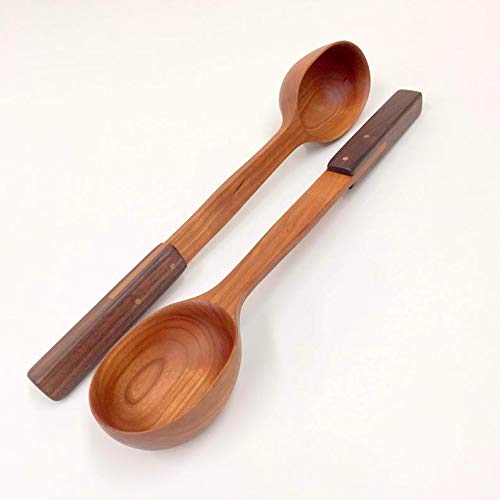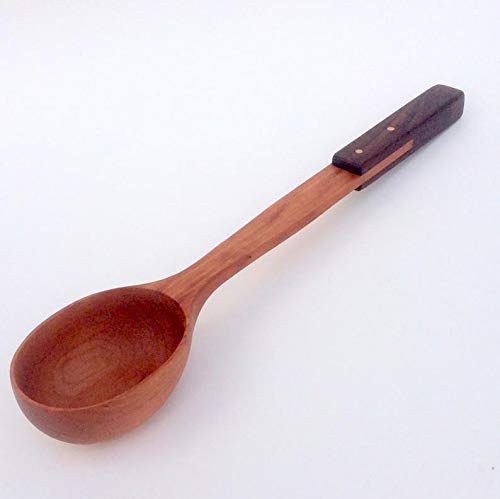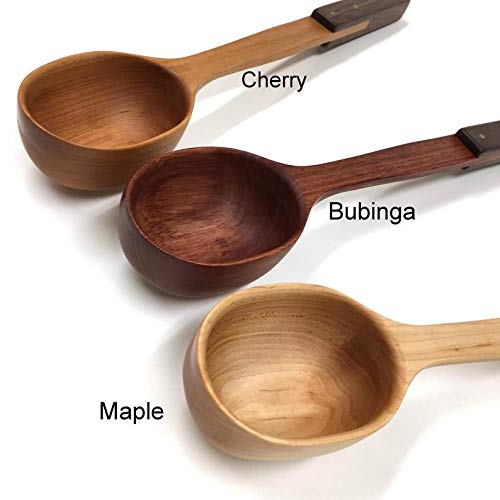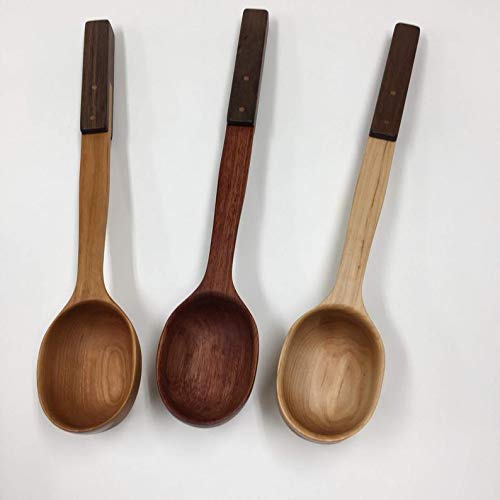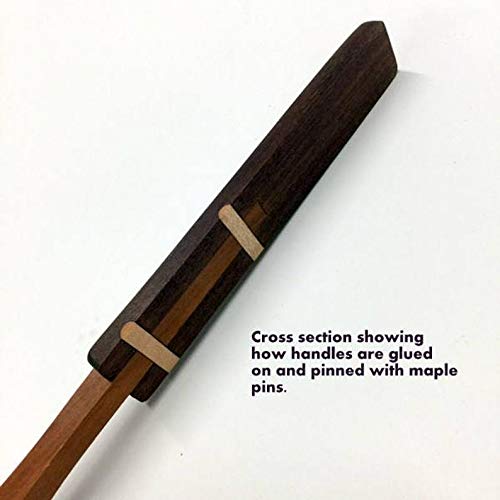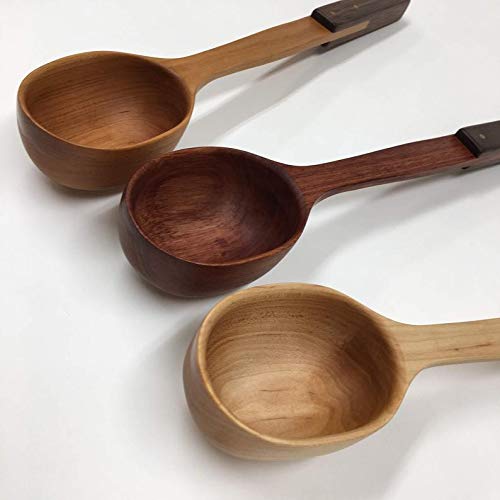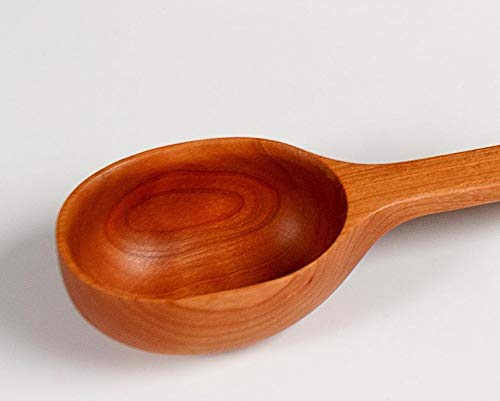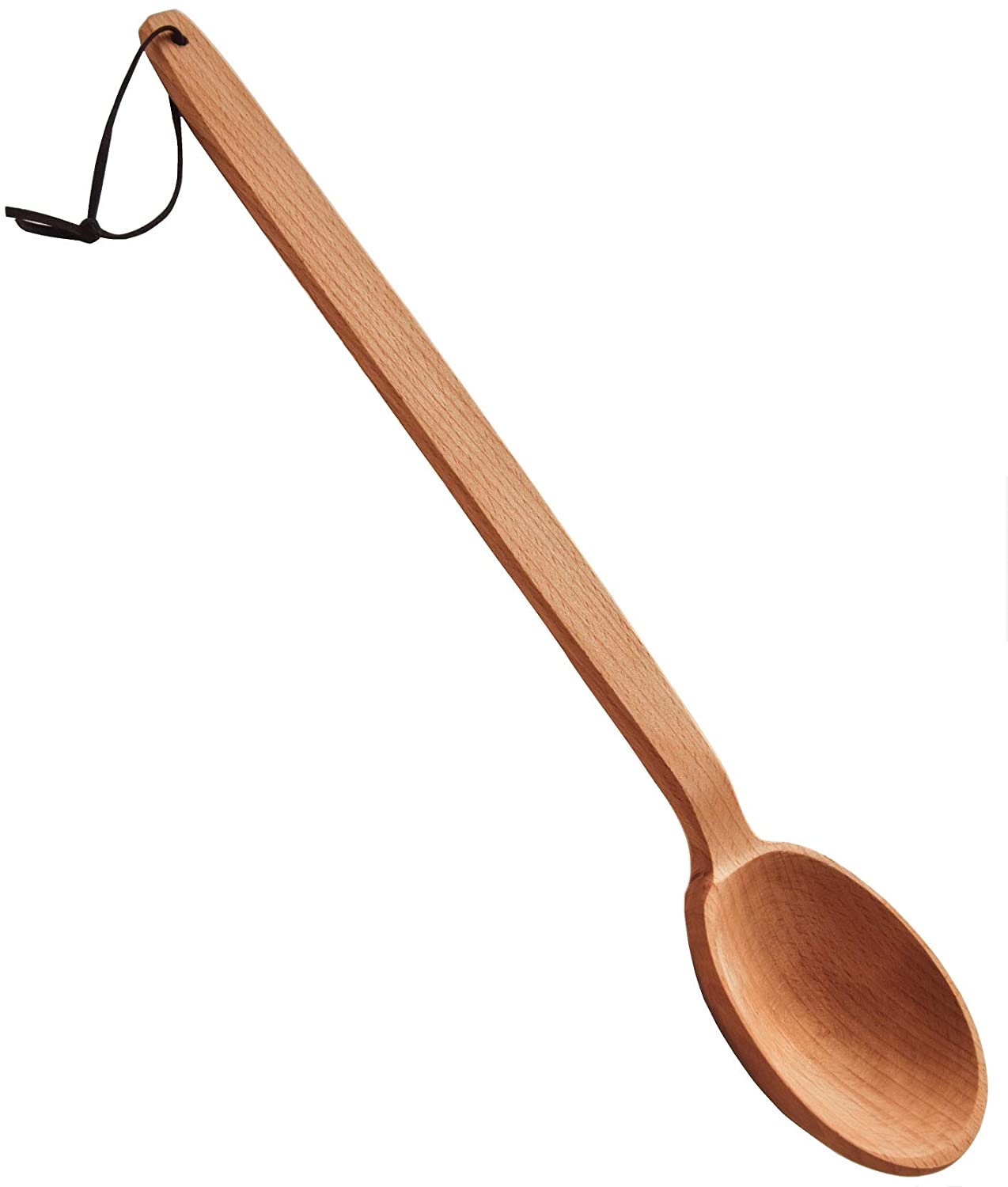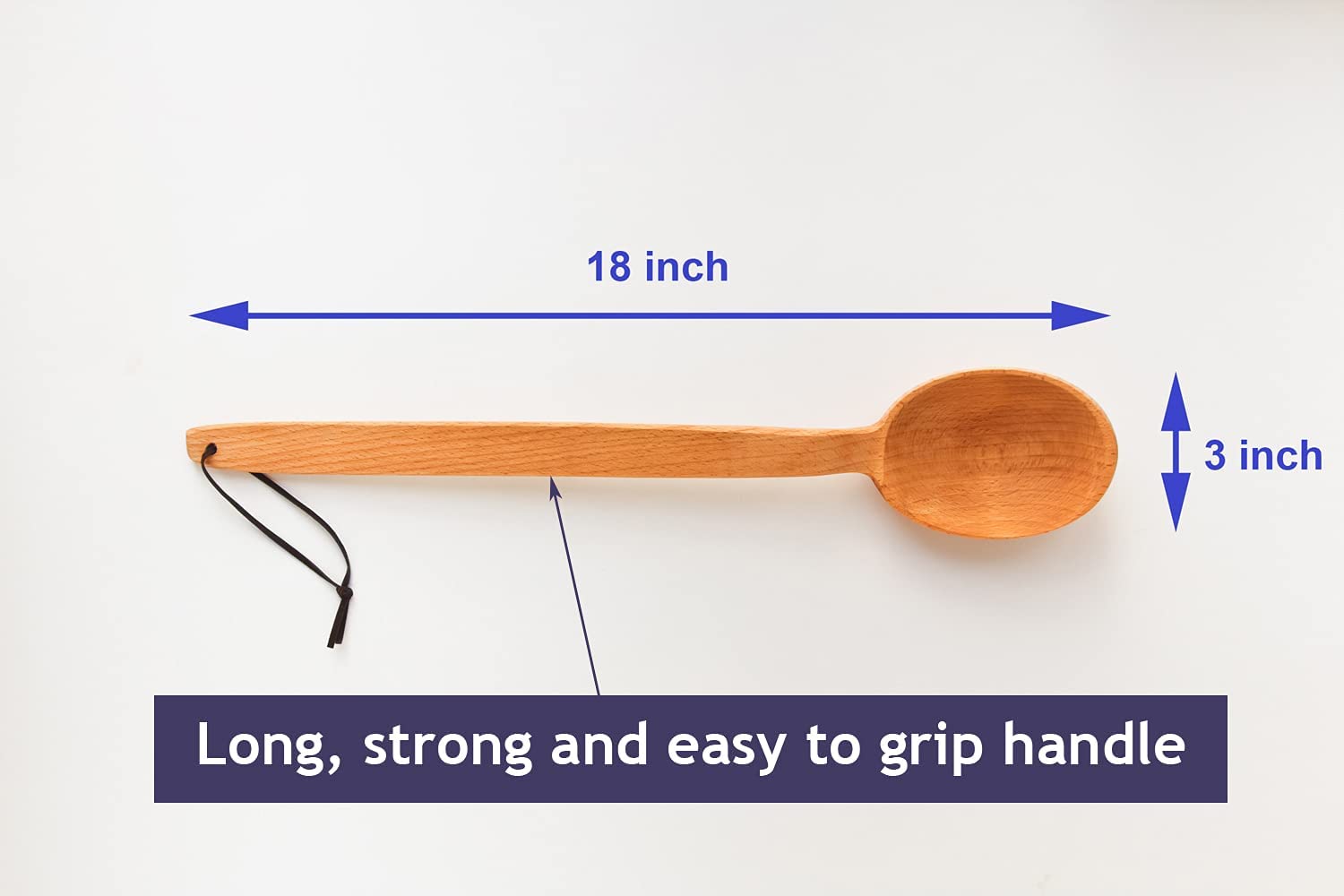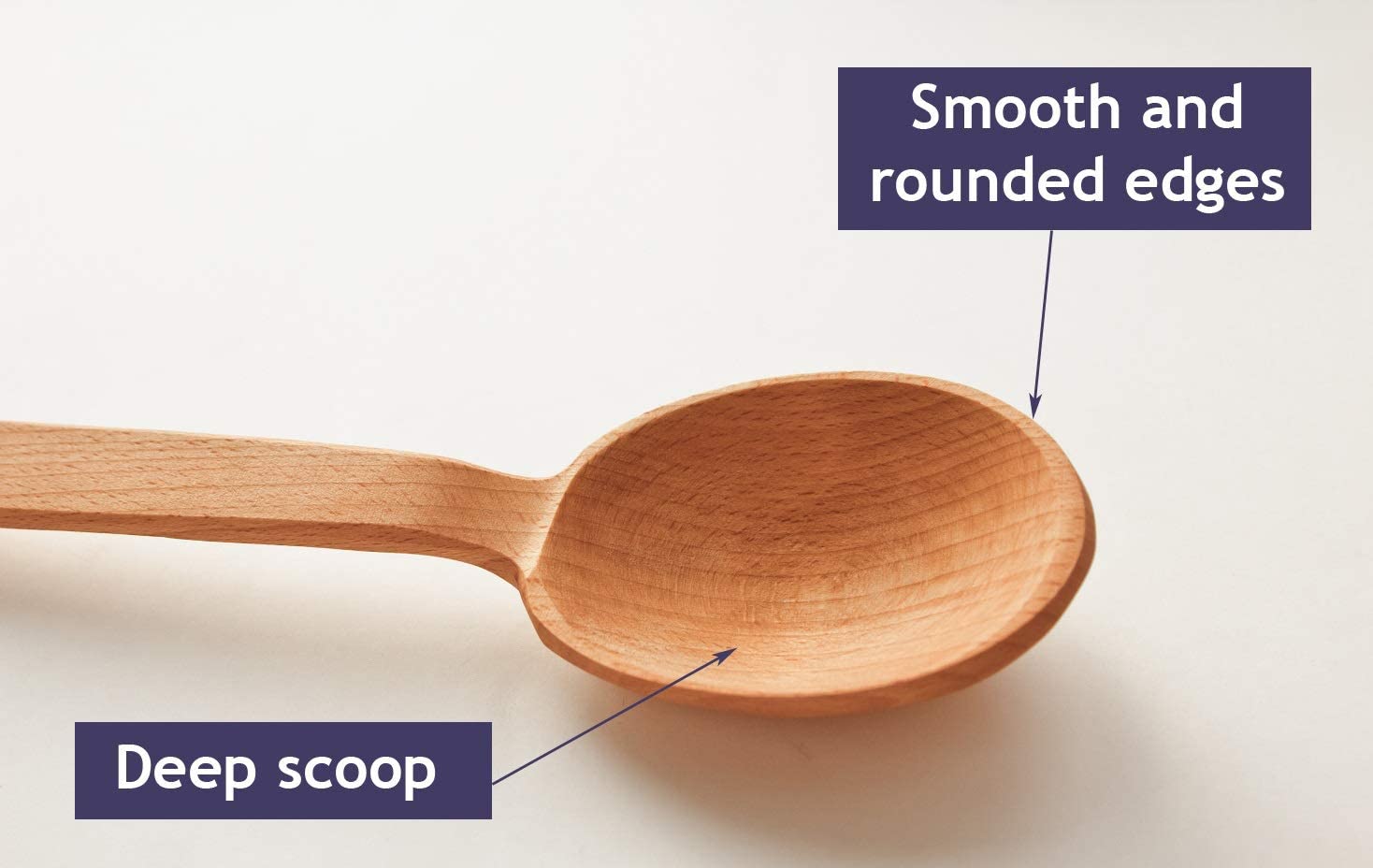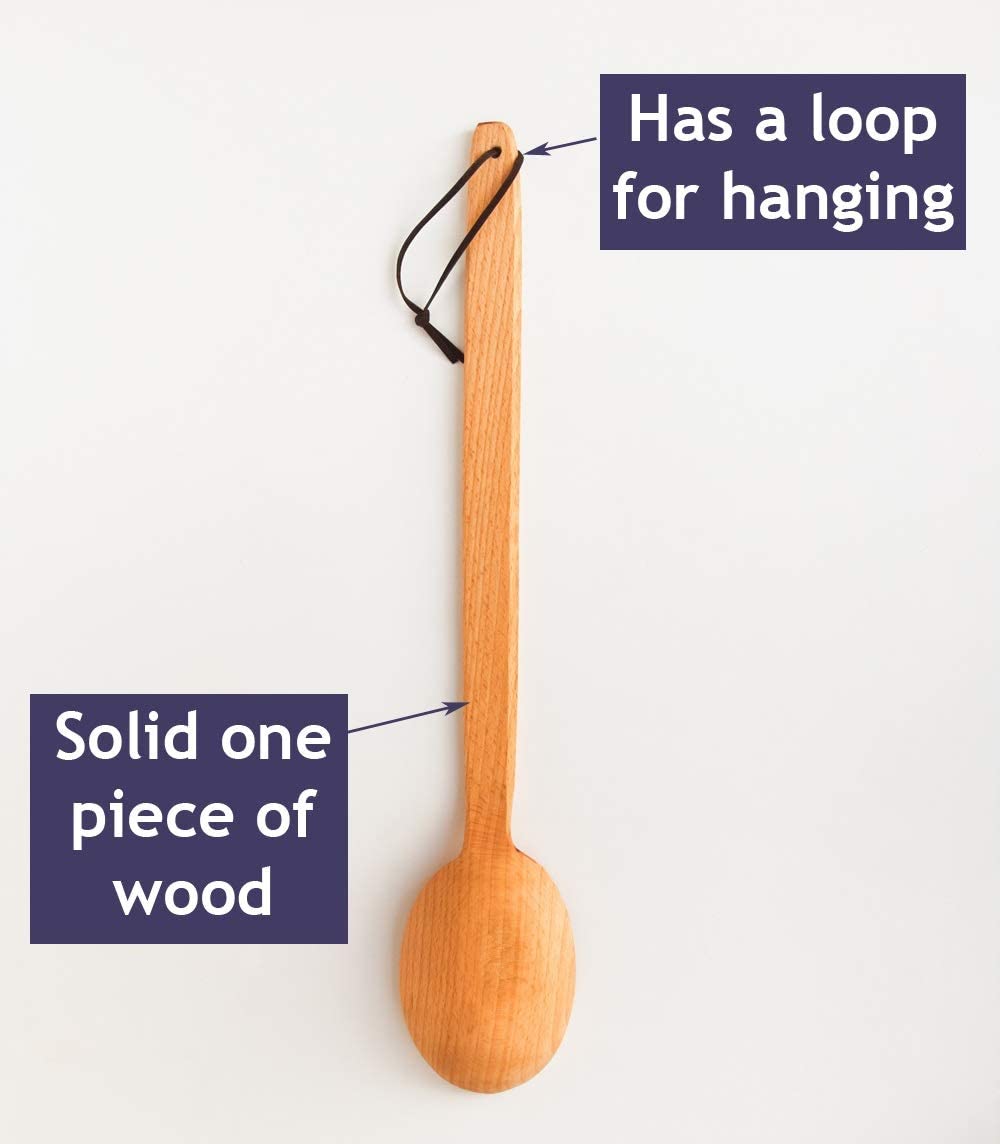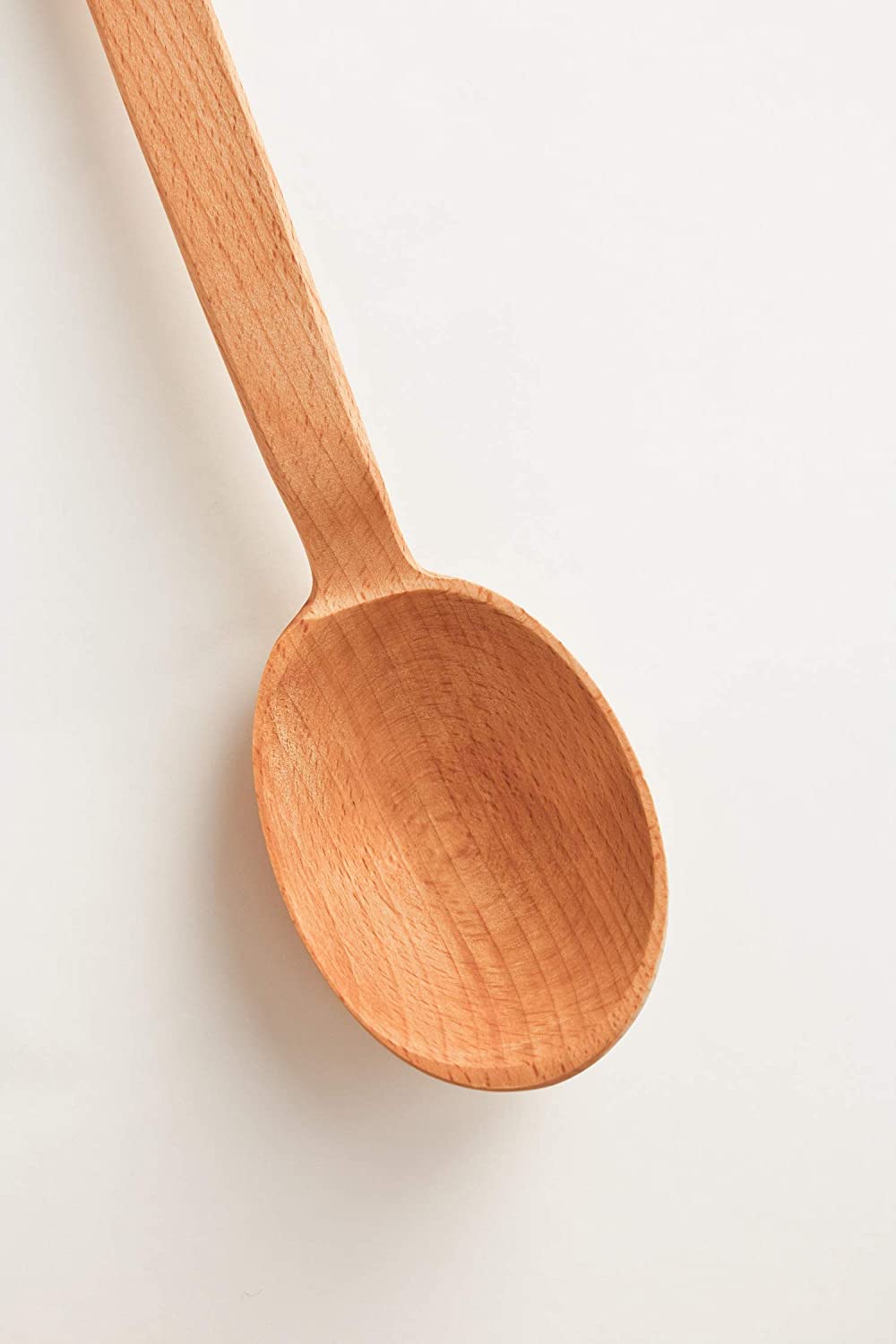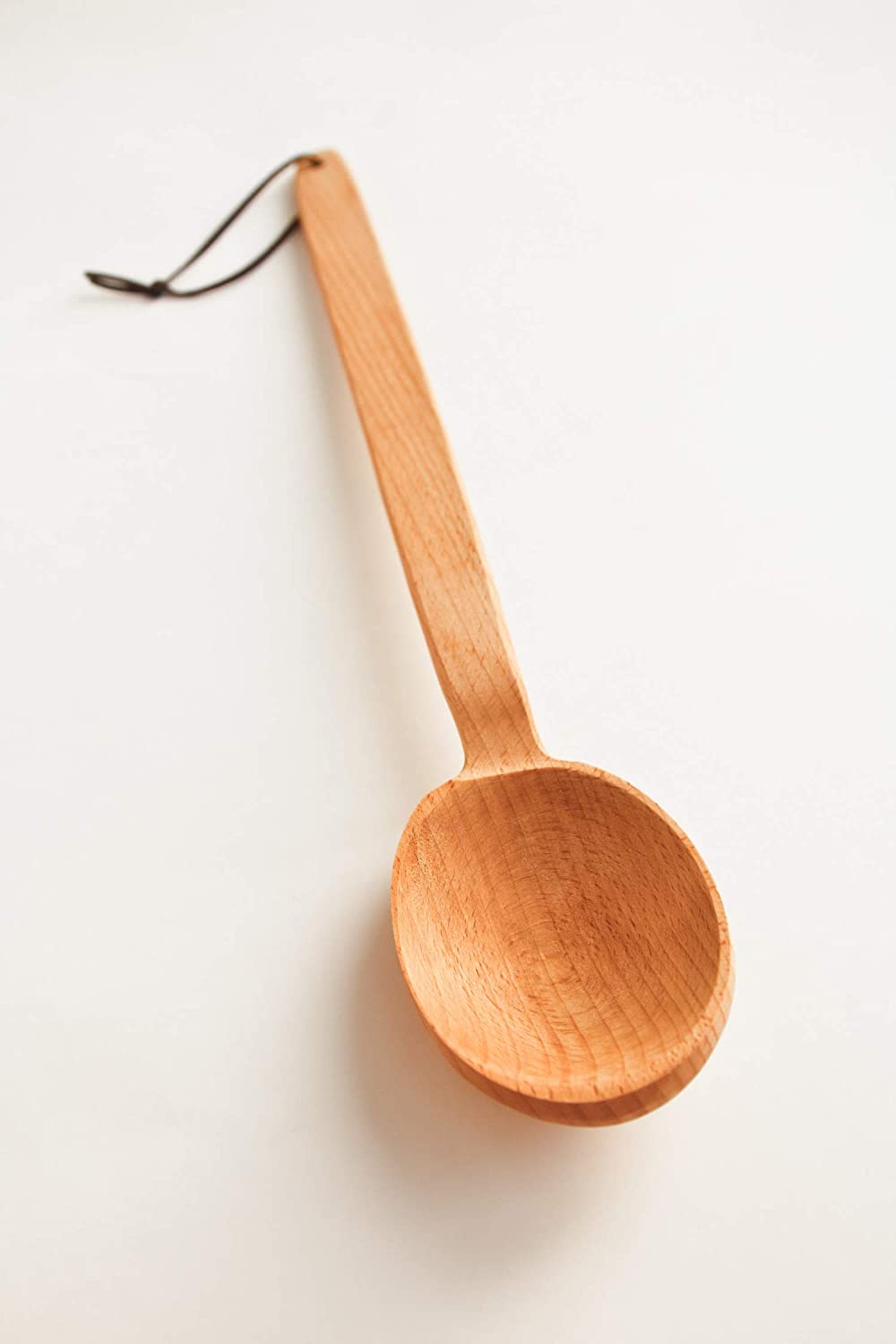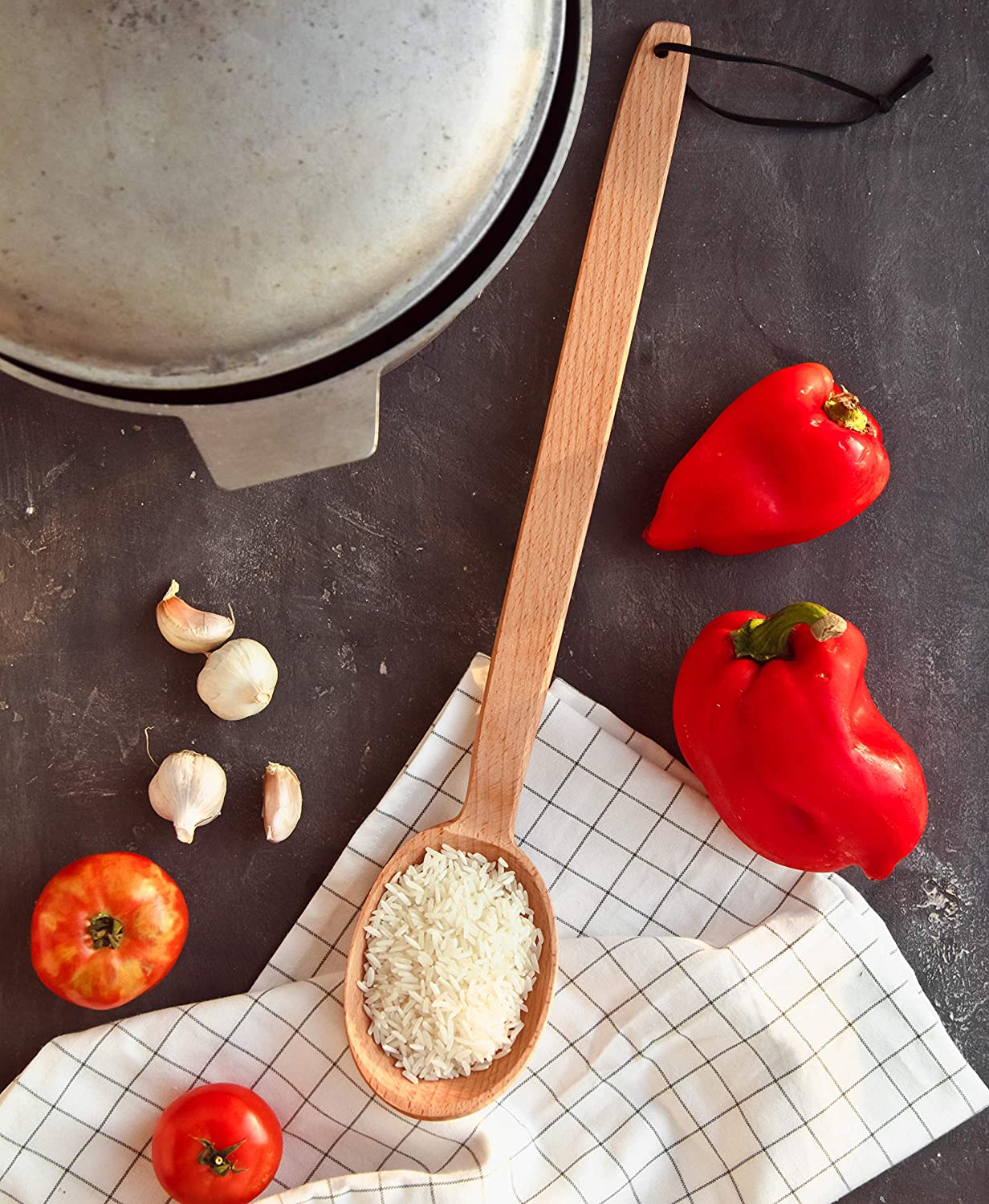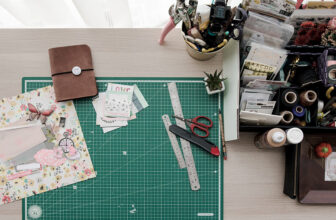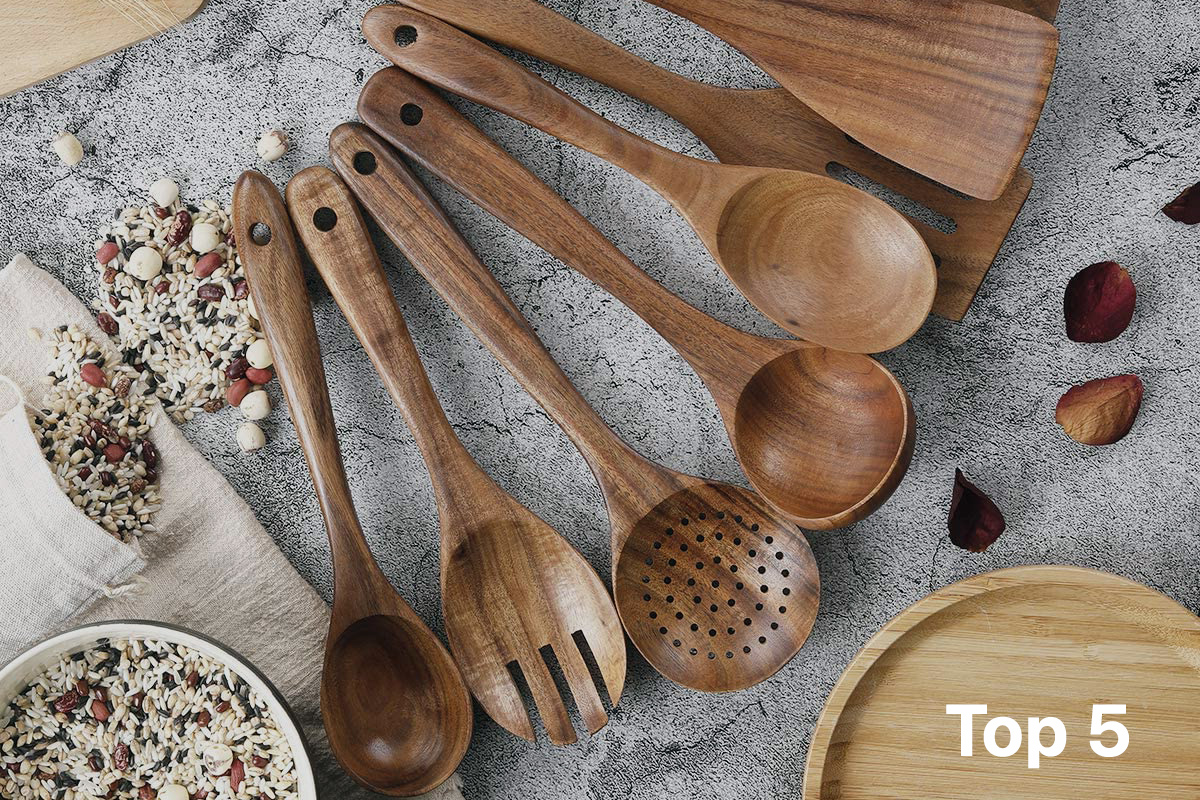
With a trio of metal, plastic, and silicone dominating the range of materials for kitchen implements, favoring wooden counterparts seems like an exotic exercise. However, there is so much more to it than an aesthetic impulse. The use of wooden kitchen utensils has a rock-solid practical foundation behind it.
These models don’t scratch the nonstick coating of pricey cookware. Their heat conduction is low, which means that the handle stays cool even after long contact with hot food or the surface of a frying pan as you cook. Meanwhile, they resist high temperatures and don’t melt in boiling substances. Wood also has natural antimicrobial hallmarks that foil rapid bacterial growth. Finally, these products are eco-friendly and nontoxic.
If you are ready to take your cooking IQ to the next level with wooden kitchen utensils, there are quite a few things to keep in mind. The following paragraphs will enlighten you on all the “ingredients” of the right choice.
Criteria for choosing your ideal wooden kitchen utensils
When numerous options are available, picking the most suitable one is always a dilemma. Judging by the looks alone isn’t that bad of a tactic, but external appeal won’t give you the big picture. Whether cooking is your hobby, household chore, or profession, characteristics such as the type of wood, finish, the shape of the handle and head, as well as the care recommendations make a difference in the long run.
To avoid making a wild guess followed by frustration, be sure to create a checklist of specifications and options you are looking for in your next wooden spoon, fork, spatula, soup ladle, spaghetti server, or whatever eco-friendly kitchen utensils you are up to buying. The following hands-on considerations will point you in the right direction.
Material
Different types of wood have different durability, especially when exposed to heat and frequent washing. The material affects the price tag, too. Inexpensive kitchen utensils are typically made from pine wood. The flip side of the affordability is that these items are more likely to crack or splinter than other products and might give your meals a subtle piney odor.
Models made from teak, bamboo, cherry, olive wood, maple, beech, and acacia are less susceptible to wear and tear and shouldn’t “spice” foods with unwelcome flavors. With that said, they tend to be more expensive than pine utensils. Regardless of material, though, keep in mind that wood is a natural resource that absorbs liquid and shrinks as it dries. This can cause your cutlery to deform and become damaged after multiple cycles of cooking and washing.
Head shape
There is no such thing as a one-size-fits-all head design. The perfect shape depends on the specific uses. If you do a lot of frying, you will need a wooden spatula or spoon with a thin front edge that slips well under your food for easy scraping. Scoop-like heads are optimal for lifting bigger portions of food at a time and work better than flat ones. To mix your ingredients efficiently, use a “corner spoon” with an asymmetrical point on its head that helps reach the edges of the pan. With a wider head, you can make fewer strokes to scrape, scoop and turn your food.
Handle design
The length of the handle is the key to proper ergonomics and safe use. If it’s not long enough, your hand might be too close to tiny droplets of hot fat sprinkling out of a frying pan or wok. When you are stirring foods in a mixing bowl, a short handle is not the best option either because it may not eliminate undesirable contact of the substance with your skin.
Your experience will also depend on how comfortable the handle feels. A thick one may cause arm fatigue, especially if you need to push through things like dough repeatedly. Flat handles feel awkward when squeezed, while those with thin round designs can be problematic to grip securely.
Of course, the perfect shape is a matter of personal preferences and the size of your hands, but from where I stand, the best handle is a simple one with a round bottom part and a flat top surface where your thumb can rest as you cook. I also like designs where the thickness decreases slightly from the tip toward the head of the piece.
Finish
Some wooden kitchen utensils are polished thoroughly to make them sleek. Some have rough and somewhat scratchy surfaces. Models with glossy finish surely look fancy, but with the caveat that they might be too slippery to hold and some foods will be simply sliding out of the head. They are also more likely to lose the original charm quickly and develop patches after several dozen instances of washing.
Pieces with rougher surfaces, in their turn, maintain their look and feel for a long time and hold on to food better as you grab it. I think the best finish should strike a balance between a sleek and scratchy surface. It has to be relatively smooth but definitely not prone to slipping out of your hands all the time.
Cleanup
To maximize the lifespan of wooden cutlery items and preserve their finish, many makers recommend hand-washing them with warm soapy water using a sponge and then drying them with a dish towel or letting them air-dry. In addition, applying a little bit of food-safe oil onto them periodically won’t go amiss. This substance resists excess moisture and thereby thwarts deformation while maintaining the proper appearance of the piece.
You may also come across care instructions stating that the utensils are dishwasher-safe. This saves a ton of time and effort, but in my experience, it could be risky business. When exposed to continuous heat, humidity, and aggressive detergents inside a dishwasher, wooden materials tend to fade quickly, warp, crack, and their smooth finish becomes rough sooner than you would expect.
Single piece or set
In most cases, a set of wooden kitchen utensils is good value for money as long as you need all the items that come in the bundle. For instance, if your cooking style involves a lot of flipping, scraping, and spreading, then a set of different-sized fried, slotted, and wok spatulas will come in handy. Plus, that’s certainly a more cost-efficient option than buying individual pieces.
Top 5 wooden kitchen utensils for everyday use
Now that you know the fundamental things to consider for an informed decision, check out the following products. I have picked the best options on the market for different uses so that you can easily find the one that meets your needs and expectations to the fullest.
AIUHI – 9 Pack Wooden Cooking Utensils Set with Holder
This set is unsurpassed no matter how you slice it. It includes all the essentials you may need in your kitchen: four types of wooden spoons (serving, mixing, strainer, and slotted spoons), fried spatula, soup ladle, salad fork, egg whisk, plus a stainless steel holder to store them all if you aren’t willing to use the hanging holes.
Made from solid Thai teak wood, each piece is nontoxic and incredibly durable. You don’t have to worry about splinters, cracks, deformation, or ungluing. Unintended extra flavors in your foods won’t be an issue either. Also, teak doesn’t scratch nonstick pans. By the way, an 11 Pack Set from the same manufacturer is also available. Additionally equipped with a wooden spaghetti server and a tong, it is the most complete version across the board. Be advised that the maker recommends hand-washing these items. That’s something to keep in mind if you are accustomed to using a dishwasher.
Kalorik Mad Hungry Spurtle 4pc Set
If your cooking repertoire combines stirring, smashing, scraping, scooping, spreading, serving, as well as sifting and draining, then the Mad Hungry Spurtle Set will become a “daily driver” in your kitchen. Inspired by ancient Scottish traditions, it bundles an original, medium slotted, skinny, and mini spurtle for all the different tasks I’ve listed.
The spurtles are made from acacia wood, which makes them both durable and gentle on your pots and pans. Due to ergonomic design, they easily reach all areas of your cookware to ensure even baking and frying. Oh, and look at those elegant contrasting handles! They are a pleasure to grip, too.
Perfect Stix – Sucre Shop: May the fork be with you, Christmas sweater cutlery kit, Cactus cutlery
If you are looking for ways to beautify a themed party, a picnic, or a holiday gathering, the offerings by Perfect Stix are brilliant options. You get hugely creative sets of disposable wooden cutlery your friends and family will adore. Made from birch wood, these items are 100% biodegradable and compostable.
The Star Wars flavored series includes 20 forks with a black print saying “May the fork be with you”. The play on words is awesome, isn’t it? Another wonderful pack consists of 36 pieces (wooden spoons, forks, and knives) with red and green Christmas sweater designs on their handles. One more available set is perfect for a western theme party, featuring a green cactus print on each one of the 18 pieces. With great ideas at the core of these packs, a memorable pastime is guaranteed.
Fine Wine Caddy: Large wooden soup ladle, Handmade flat spatula, Hand crafted wood salad tongs, Hand carved wooden serving spoon
Using handmade products is a great way to add a touch of soul to your kitchen. The beautiful wooden utensils from Fine Wine Caddy can bring that precious sense to your cooking routine. The hand crafted soup ladle combines three hardwoods: cherry wood for the bowl, walnut for the handle, and maple for the pegs. It boasts an optimal finish that’s neither slick nor too rough.
When ordering a flat spatula for stirring vegetables or flipping pancakes, you have the freedom to specify the preferred type of material: Bubinga, cherry, maple, or zebrawood. None of them will damage your nonstick cookware. The only invariable part is the walnut handle.
The handmade salad tongs have a walnut head, and as is the case with the flat spatula, you can customize your order by choosing the wood for the rest of the utensil. This product delivers unparalleled convenience for serving salad, pasta, or pastries.
The head of the 14.25″ wooden spoon is carved from cherry wood and has a walnut handle. What I like the most about this item is its long handle that protects your hands from heat and steam. The bowl is large enough to ensure comfort as you serve your meals. All models are sanded with food-safe finish.
Ecosall Long Handle 18″ Cooking Spoon With a Scoop
This giant spoon is a fantastic choice if you need to cook a lot of food in one go. It fits the mold of a perfect stir paddle, mash paddle, or scraper for country boil, home brewing, gumbo, chili, and other dishes cooked in large pots. Made from 100% natural beechwood, it is safe for your health and gentle on cast iron cookware.
The spoon comes with a loop at the end of the handle, which makes it easy to hold despite the king size. The finish is smooth but doesn’t stand in the way of a secure grip. All in all, this wooden cooking tool is truly one of a kind. It works where smaller, less sturdy utensils are unusable. It can also make a great gift for chefs and cooking hobbyists alike.
FAQ
Are wooden cooking utensils safe?
From a sanitary perspective, there are hardly any pitfalls with using wooden kitchen utensils. Unlike plastic and silicone counterparts, they are nontoxic and therefore won’t transfer any potentially harmful substances to your food. Contrary to some metal cutlery, wooden models don’t enter into chemical reactions with acidic foods such as lemon juice and tomato sauces.
However, the natural material of these utensils is vulnerable to cracking and has a porous texture. Food that remains in these crevices can be a source for bacterial growth. Therefore, it is strongly recommended to thoroughly wash your wooden spoons, soup ladles, spatulas, and forks after each use according to the manufacturer’s care instructions. If you follow proper maintenance practices, these products are absolutely safe to use.
What are the best wooden spoons made of?
The types of material used in wooden spoons run the gamut from pine, teak hardwood, and beech to olive wood, maple, acacia, and bamboo. All of them deliver decent usability characteristics, and yet a few stand out. The highest quality spoons are made from harder woods such as maple, beech, olive wood, teak, or bamboo. These models are more crack-resistant than the rest and usually last longer.
Pine spoons are on the opposite side of the list. While being fairly cheap, they are the softest ones across the spectrum and tend to absorb more oils and liquids, which may affect the flavor of your meals and lead to cracking down the line.
Is teak or bamboo better for cooking utensils?
Teak has a natural moisture barrier that keeps it from swelling excessively and soaking up liquid food constituents. It is also very durable and its texture looks gorgeous. Bamboo, in its turn, is lightweight and incredibly sturdy. It resists stains and barely sucks in odors. While kitchen utensils made from teak and bamboo boast similar durability, I prefer the latter because they are less likely to leave scars on your cookware and lose their original shape after prolonged use.
By the way, both of these materials have antimicrobial properties developed as an evolutionary means for fending off various pathogens. Plus, they are renewable resources, and that matters if you care about nature.
Why we should not use wooden utensils for cooking?
Skeptics list three main downsides of wooden cooking utensils. Firstly, they have a porous surface and thus absorb moisture, which is a potential catalyst for unwanted flavors, misshaping, and cracking. Secondly, most of them are not dishwasher-safe, so you may have to go the extra mile cleaning and drying them. And thirdly, they might stain after interacting with highly pigmented foods such as beets, tomatoes, and turmeric.
If you aren’t okay with any of the above, then I guess wooden utensils don’t belong in your kitchen. But keep in mind that the mainstream alternatives such as metal, plastic, and silicone are not immaculate either. For example, they may leach chemicals and damage nonstick surfaces. At the end of the day, the choice of material is always a tradeoff to an extent.
Are wooden forks compostable?
The short answer is yes. Wooden forks are 100% compostable in industrial or backyard compost facilities. Zooming out a bit, any type of wood is biodegradable as long as no additives are applied during the manufacturing process, which means it can be completely decomposed by microorganisms without toxic leftovers. This eliminates the risk of environmental damage.
Summary
Wooden kitchen utensils have their pros and cons, but the same goes for models made from other materials. What really sets them apart is their individuality. Every wooden product – be it a spoon, a spatula, or a ladle – has its unique natural “fingerprint” that never repeats elsewhere. Pair that with all the merits highlighted above – and I bet some of these utensils will end up on your wish list.

